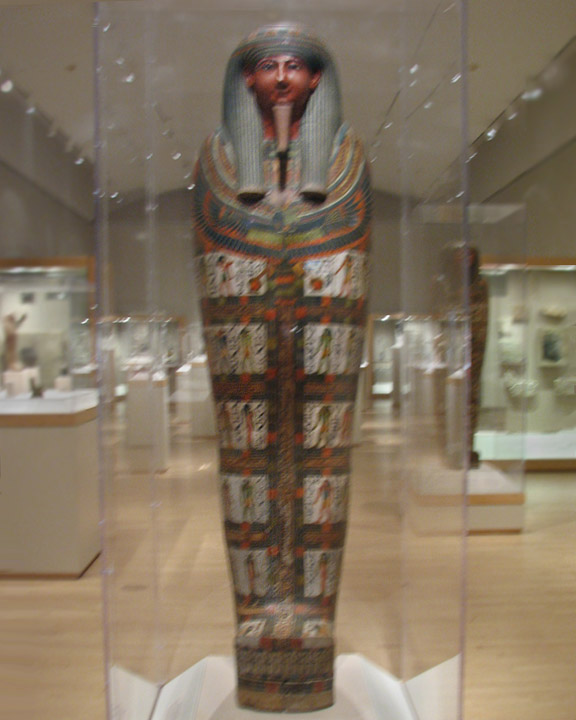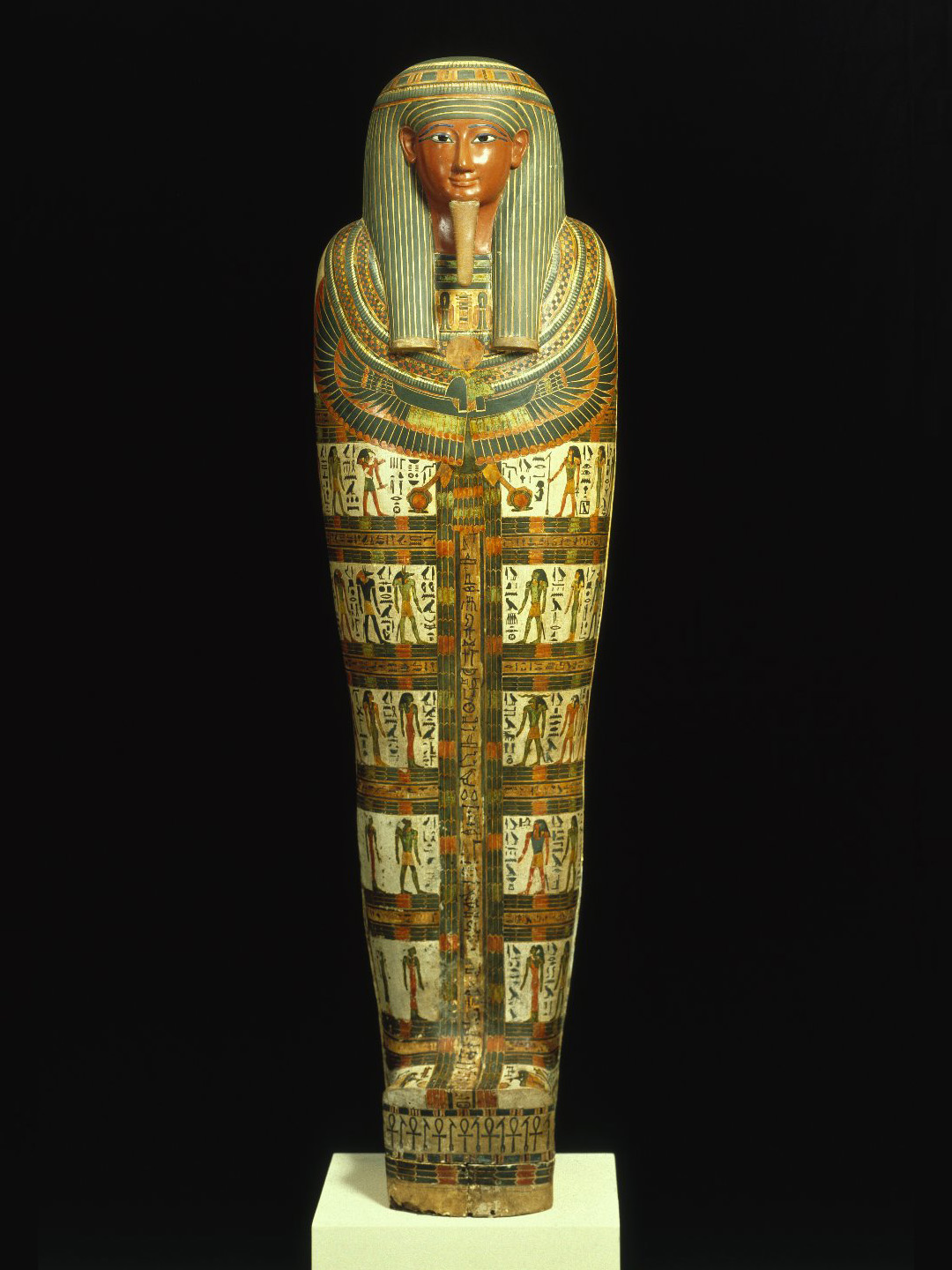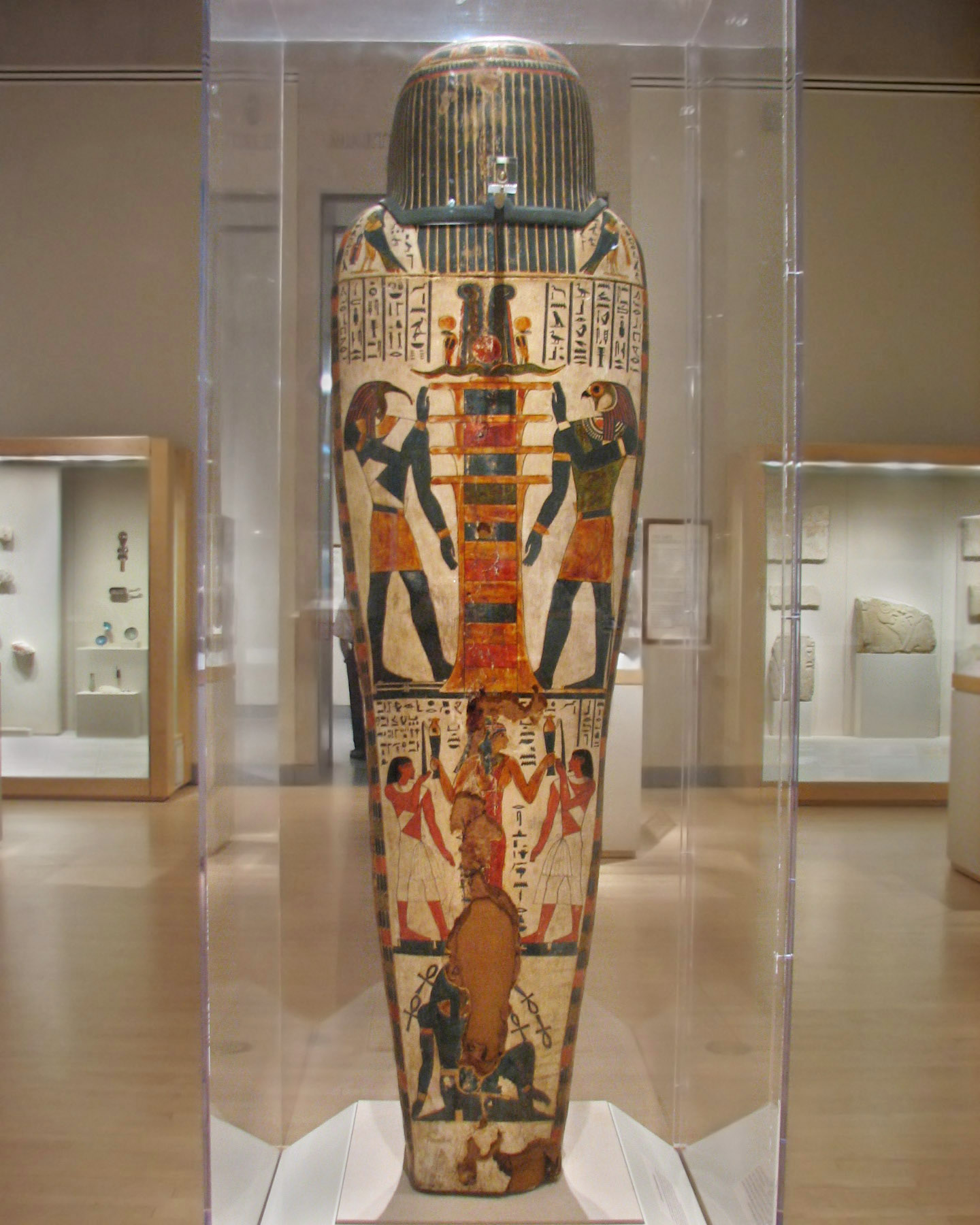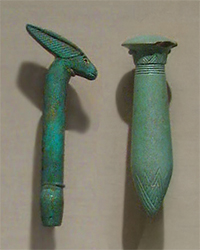(From _Art for Eternity_, page 118:)
"The priest Nespanetjerenpare's face, with its almond-shaped eyes and slightly arched brows, is probably based on New Kingdom prototypes. The construction of his 'mummy case' is one piece and the profusion of divine images, religious symbols, and texts that decorate it are most closely paralleled by works from the Twenty second Dynasty or later."
(From the Museum website)
"The decoration of Nespanetjerenpare's cartonnage richly details the theme of resurrection and permanence. Above the wesekh-collar is a protective pectoral in the form of a djed-pillar and a tyet-amulet. The djed-pillar is the hieroglyphic writing of the word "stability" or "endurance," and the sign tyet, often written in assocation with djed, expresses the idea of well-being. Below the wesekh-collar is a ram-headed falcon pendant, a representation of the solar god as he travels through the underworld at night. The cartonnage base is decorated with ankh-signs and was-scepters, the hieroglyphs for "life" and "power." The small registers in the front depict a variety of deities associated with the parts of the body—like the eyes, lips, and teeth—deities who serve to protect the owner and keep his mummy bound together for eternity."
The Brooklyn museum has other examples of djed-pillars, some small ones used as funerary amulets and wooden ones used to suggest 'stability' of furniture:
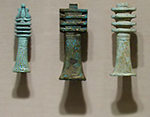
Three Djed Amulets
|
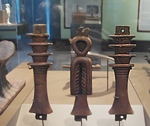
Djed and Tyet
|
They also have a small faience was scepter:
